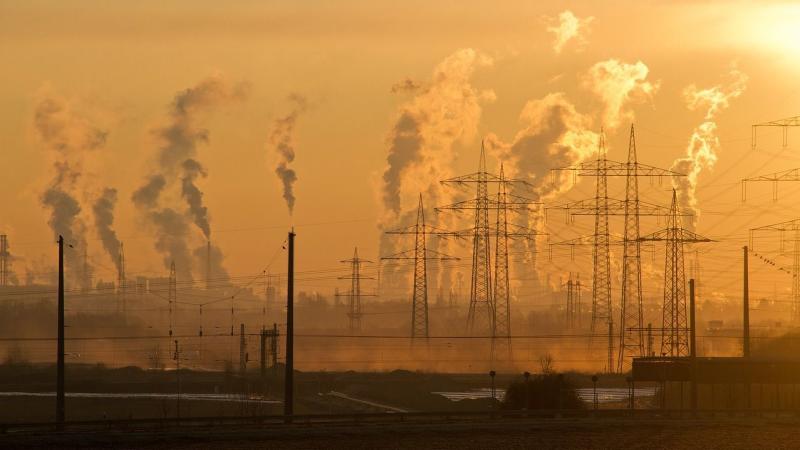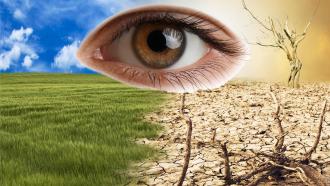
With rising pollution levels, small particles suspended in the air, such as dust, soot, and organic matter are also increasing. These particles, called aerosols, are known to affect the formation of clouds that bring rain, besides affecting our health. Clouds influence the climate on our planet as they reflect some of the Sun's radiation, thus regulating how much of it reaches the Earth. However, the exact extent to which aerosols affect the climate in a region is uncertain as there are variations in aerosols and the clouds at different times and places.
In a recent study, researchers from the Indian Institute of Technology Kanpur, Pacific Northwest National Laboratory, USA, University of Hyderabad, and Indian Institute of Technology Delhi have tried to understand how aerosols affect the Indian monsoon season. The results of the study were published in the journal Nature Communications. The study was partially supported by the University Grants Commission, Department of Science and Technology, and the Ministry of Earth Sciences, Government of India.
The researchers of the study used satellite data that contains information about cloud properties, such as cloud fraction, cloud optical thickness and cloud top pressure. It also has data on the amount of solar radiation that gets reflected from the top of the atmosphere and the surface of the Earth. This data was collected over a period of 15 years, from 2002 to 2016. In particular, the researchers studied convective clouds that bring monsoon rains, and are formed by the warm, humid air that rises from the ground. The researchers identified the central region of India, including the states of Madhya Pradesh, Bihar, Jharkhand and Uttar Pradesh, for the study as these states lie in ‘extreme’ water scarcity zones as the region lacks the infrastructure for regular water supply.
When moisture condenses around particles, such as aerosols, cloud droplets are formed which join together to form a big conglomeration that is traditionally called the cloud. Too many aerosols result in numerous such cloud droplets, which take a long time to grow into rain. Hence, clouds hang in the sky for longer, before they rain, and reflect a higher amount of the Sun’s radiation into the atmosphere, resulting in a cooling effect on the surface of the Earth directly below the cloud.
During the monsoon months, the warm, humid air that exists above the polluted Earth’s surface rises and adds more cloud droplets to the existing cloud, which grows taller into the upper, colder layers of the atmosphere. At freezing temperatures, ice starts forming within the cloud, and the latent heat of freezing is released, which further promotes the humid air to rise, and this cycle continues. The result is a large convective tower cloud that brings heavy rainfall. Thus, the presence of high amounts of aerosols during the monsoon months lead to the formation of taller clouds with a large number of ice particles and, eventually, heavier rainfall.
The researchers of the current study, in their analysis of the satellite data, found that such a phenomenon occurred over central India. They observed that with the increasing population of aerosols in the atmosphere in these regions, there was an increase in stratiform clouds and the amount of solar radiation reflected from them. The researchers validated their observations with another dataset in which thin clouds were unlikely to be mistaken for aerosol. The results reaffirmed the correlation between aerosol density and reflection of solar radiation from clouds observed in the initial analysis.
“Meteorology can also affect aerosol-cloud data analysis. For example, high wind flow can cause an increase in both clouds and aerosols during monsoon. We re-did the correlation analysis between aerosol and cloud properties within narrow meteorology ranges for different variables, and found that the associations persisted”, say the researchers, speaking about ruling out other factors that could lead to the observed correlation between aerosol and clouds.
The researchers corroborated their findings by running two numerical simulations. The simulations recreated the realistic cloud population occurrence spanning 5 days in August 2011, where one simulation had a high amount of aerosol particles imitating the real scenario and the other had a lower amount of aerosol particles. Larger quantities of water droplets and ice particles in the clouds were observed when the aerosol concentration was high. Many thunderstorm clouds also formed frequently with an increase in aerosol levels.
Stratiform anvil clouds associated with convective thunderstorm clouds that are flattened at the top as the warmer air in the higher layers of the atmosphere prevents them from rising further, are increasingly formed when the levels of aerosols are higher. These clouds are thicker and broader than during low aerosol conditions. The many long-lasting stratiform anvils reflect most of the solar radiation into space, having an enhanced cooling effect on the surface of the Earth. “Location of clouds is important because if the cloud is present at a higher altitude, it will have more ice particles and fewer water droplets in it. It affects the frequency, intensity and spatial pattern of rainfall”, explain the researchers.
In highly polluted areas, this phenomenon results in a reduction in the maximum temperature during the day. Ironically, this is an indication of global warming, say the researchers. “Our finding shows that aerosol-cloud interactions are strong enough to affect this range. This interaction can further affect the predicted warming trends in the future. It will also influence the surface energy of the Earth since the clouds trap some of the solar radiation reflected from the Earth’s surface for longer. All these taken together, when accumulated over large time scales, say decades, can have a large impact on the clouds, rainfall, and radiation interactions over India”, they warn.






